Camera and Lenses of 10 Aussie Titles in 2022
Hear from cinematographers across features, television, online and documentary about their choices of cameras and lenses and why.
From Mandy Walker ACS’ Academy Award nominated work on feature film Elvis to documentaries in remote landscapes and series for TikTok and YouTube, 10 cinematographers explain in their own words their selection of cameras and lenses.
Cinematographer: Goldie Soetianto
Director: Elliot Owen Charles
Filmed on Blackmagic Ursa Mini Pro G2 and Blackmagic Pocket Cinema Camera 6k Pro with Samyang Cine Prime Lenses
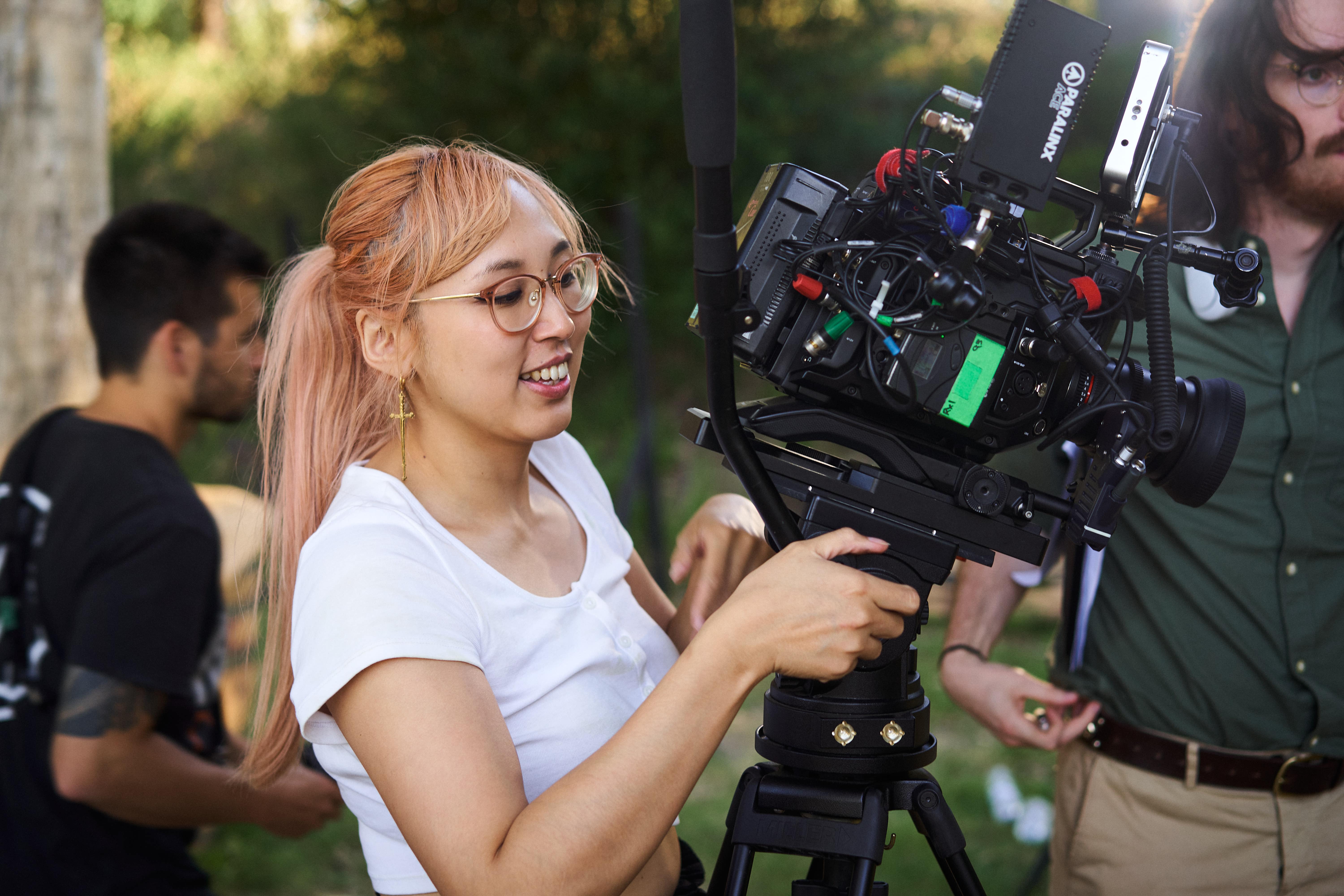 Goldie Soetianto
Goldie Soetianto
Created by Deerstalker Pictures, this Dungeons & Dragons comedy webseries about three inept adventurers has pulled in millions of views on YouTube, with Screen Australia supporting Seasons 4 and 5. It’s written and directed by Elliot Owen Charles and produced by Vincent Power and Goldie Soetianto, who was also EP and cinematographer. Watch on YouTube here.
Goldie Soetianto: As both the cinematographer and producer on our online fantasy comedy web series 1 For All, I wanted to make sure I chose a camera and lens package that didn't break the bank as we had to invest so much into what was on screen – medieval costumes, SFX make-up, sets, locations, props, and lighting. At the same time, we needed a good-looking image and a reliable and fast multi-cam workflow both on set and in post. Being able to use the same small and light EF lenses on A and B cameras, quickly switching to a dolly or gimbal for our musical dance numbers and action sequences, while matching the look across the production was imperative to staying on schedule and in budget but still produced a great result.
Cinematographers: Anna Howard ACS and Justine Kerrigan ACS
Director: Larissa Behrendt
Filmed on Sony Fs7 with Canon 16-35mm, 24-70mm and 70-200mm lenses
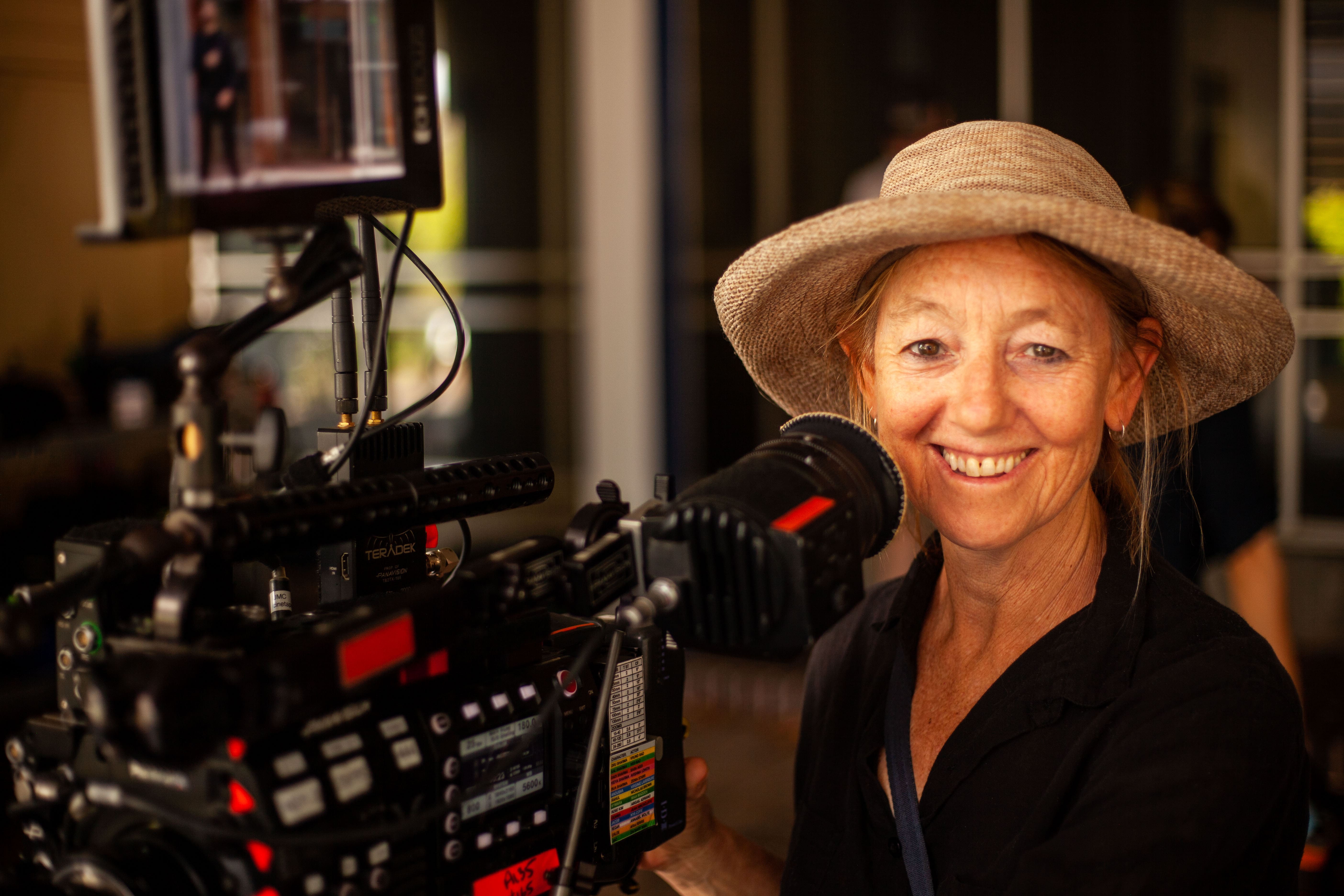 Anna Howard ACS
Anna Howard ACS
In feature documentary Araatika: Rise Up! a group of NRL greats set out to create a pre-game ceremony to celebrate Aboriginal cultures, respond to the Maori Haka, and counter racism in rugby league. Directed by Larissa Behrendt, it screened at Sydney Film Festival, CineFest Oz, Brisbane Film Festival, Sydney Travelling Film Festival and was selected for MIFF (but didn’t screen due to COVID-19), before being broadcast on NITV and SBS. Watch on SBS On Demand here.
Anna Howard: On Araatika we decided to shoot with the Sony Fs7 cameras and the Canon 16-35mm, 24-70mm and 70-200mm lenses. We had two cameras shooting for most of the production. We used three cameras on the larger production days, such as the vigil, and some of the multi-person interviews. We wanted to use a small compact camera package and felt that the Fs7s and Canon zooms were perfect. The Sony Fs7 is a versatile camera, quick to operate between production and hand-held mode. The three Canon zooms have a fantastic range and have great glass. I have always been happy with the results I have achieved when using them. Using the zoom lenses also eliminated constant changing of lenses.
Cinematographer: Carolyn Constantine ACS
Directos: Geoff Bennett, Matthew Moore, Leticia Caceres, Jessica Tuckwell, Kriv Stenders, Margie Beattie, Rebecca O’Brien.
Filmed on a Sony Venice Camera with a set of Canon Sumire Prime Lenses, a set of vintage Canon K35 lenses, Angenieux EZ 1 and EZ 2 Zooms. Filters included split diopters and a set of Hollywood Black Magics.
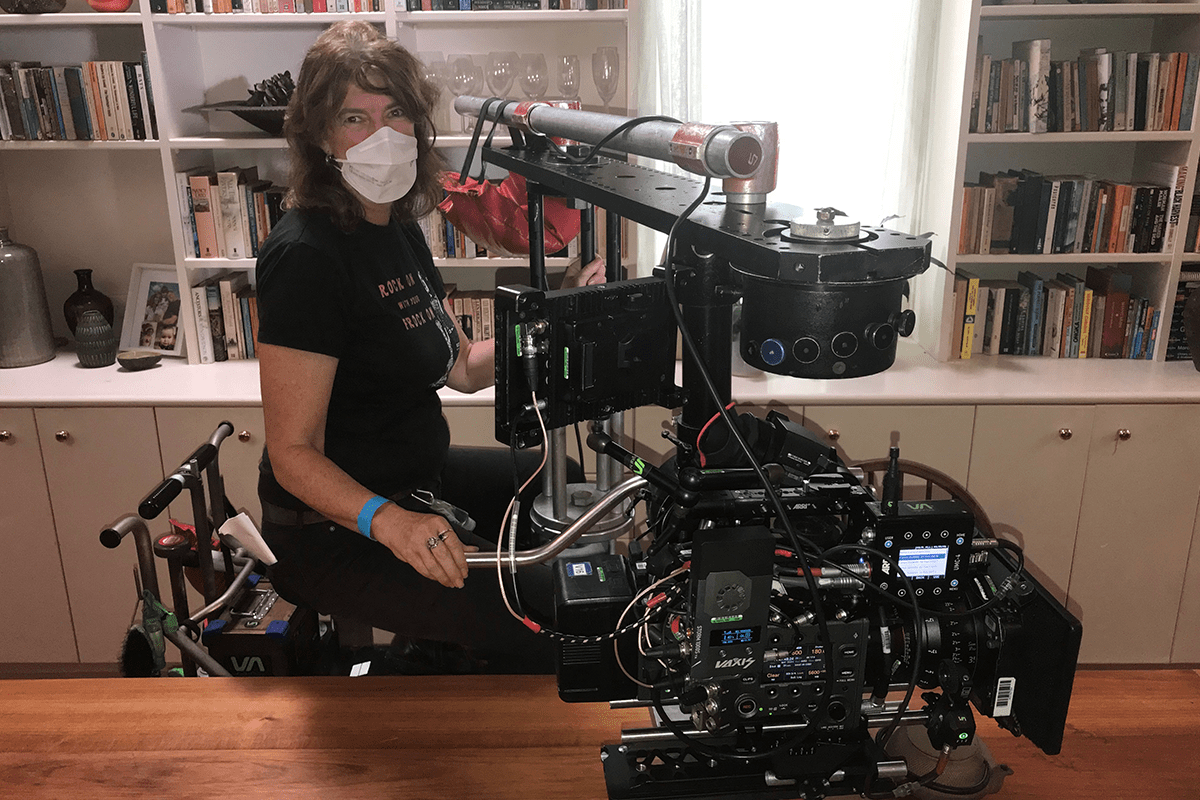 Carolyn Constantine ACS
Carolyn Constantine ACS
The popular Stan series created by Claudia Karvan and Kelsey Munro, Bump follows ambitious highschooler Oly (Nathalie Morris), who has an unplanned pregnancy. Season 1 followed the months after baby Jacinda’s birth, as the lives of Oly, Santi (Carlos Sanson Jr.) and their families are turned upside-down, with Season 2 picking up where the story left off and Season 3 jumping ahead several years. Watch Bump Season 1-3 on Stan here.
Carolyn Constantine ACS: When putting together a camera package for Bump S2 & S3 I chose the Sony Venice Camera as it not only met the 4K delivery requirements of the steaming platform but also contributed to the slightly saturated colourful look of the series, coped very well with the dynamic range presented by multiple locations and the dual ISO was great for the many street night scenes particularly in Season 2.
Working with many fantastic directors over the two series meant it was a balance between bringing each of their visions to the screen whilst still maintaining a strong visual look and stylistic consistency to the story world. Expressive use of naturalistic lighting across a range of locations, the scripts moving between drama and comedy and an incredibly talented ensemble cast meant that I required a lens package that was versatile and could help create different looks. The Canon Sumire Prime Set allowed me to manipulate the look as they have a totally different feel when used wide open which was great for a number of flashback scenes for the character of Santi in Season 2. The vintage Canon K35s intercut well with the Sumires and were mostly used for specific scenes with the character of Oly. Their softer resolution, gentle roll off and distinct bokah helped us inside Oly’s internal world at key turning points of her story arc.
Cinematographer: Mandy Walker AM, ASC, ACS
Director: Baz Luhrmann
Filmed on ARRI Alexa 65 and ARRI Alexa LF with custom Panavision Primo, Sphero 65s and T series lenses and a 55mm Petzval lens.
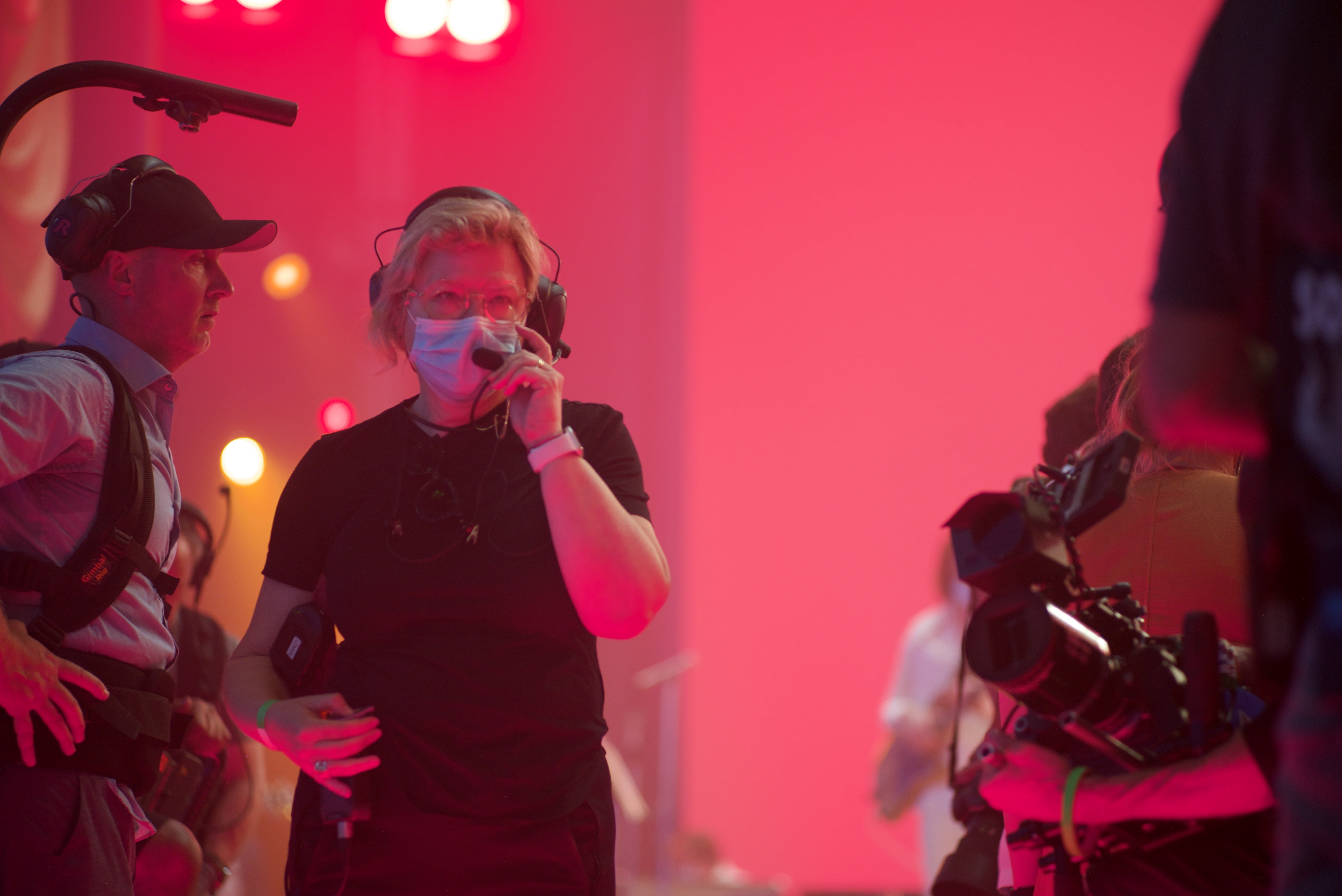 Mandy Walker AM, ASC, ACS
Mandy Walker AM, ASC, ACS
The latest film from director, writer and producer Baz Luhrmann charts the iconic singer Elvis Presley’s rise to fame through the 50s, 60s, and 70s, with Austin Butler in the title role. Filming took place in Queensland and it became the highest-grossing Australian film of 2022 with $33.48 million. It’s been nominated for eight Academy Awards, including Best Cinematography, with Mandy Walker ACS just one of three women in history to be nominated.
Mandy Walker AM, ASC, ACS: What we wanted to create in the visual language for the film Elvis was the periods that he existed in American during the 1950s, ‘60s and ‘70s, and the influences he had on the culture and music. So my research was into movies, stills photography and existing footage of Elvis: his live concerts and home movies in particular. We wanted to replicate those concerts exactly. I spent a long time working out the camera angles, the period lighting fixtures and most importantly to build lenses that replicated the feeling and expressed the time period to an audience. I went into Panavision with Baz and we chose two sets of existing lenses: Spherical Sphero 65’s for the first half of his life, then went to Anamorphic T series for after he goes to Las Vegas. The thing is I had Dan Sasaki from Panavision adjust them and some were built from scratch to be bespoke and give me all the aberrations and feel for lenses of the time. Most modern lenses now are clean and can be quite clinical, especially on a digital camera. So I had him put back all the focus drop off on the edges, the colour into the flares, change the shape of the bokeh, and the softness of the image that they would of had then. We also decided to shoot on Alexa 65 because we thought Elvis’ life was epic, so let’s shoot on the most epic image we can – 65mm. We also had what's called a Petzval lens, which was made for the dreamy memory sequences. That was made from a projector lens from the 1800s, specifically for us. What it does, is it has a vignette around the outside - it's a very old-fashioned type of vortex feel that was in lenses really early on, like [1920 movie The Cabinet of] Dr. Caligari days. We spent a long time rehearsing and testing all the elements of the different departments together to make sure the colour palette, textures of sets and costumes paired with the lighting and lenses were in harmony.
The other thing is that we had 360 degrees of set most of the time [and] the way Baz works is that the whole set is physically there. Then blue screen extensions outside windows and for our movie, extensions of the audiences and the stadiums for the concert sequences. We shot everything on ARRI Alexa 65, Alexa LF for high-speed footage, and VFX added "live grain” and post effects to make some of our footage look like it was shot on 16mm and 8mm.
Cinematographer: Benjamin Bryan
Director: Kasimir Burgess
Filmed on an ARRI Mini LF with Contax Zeiss lenses as well as a Super 8mm camera and a Mavic Pro 2 drone
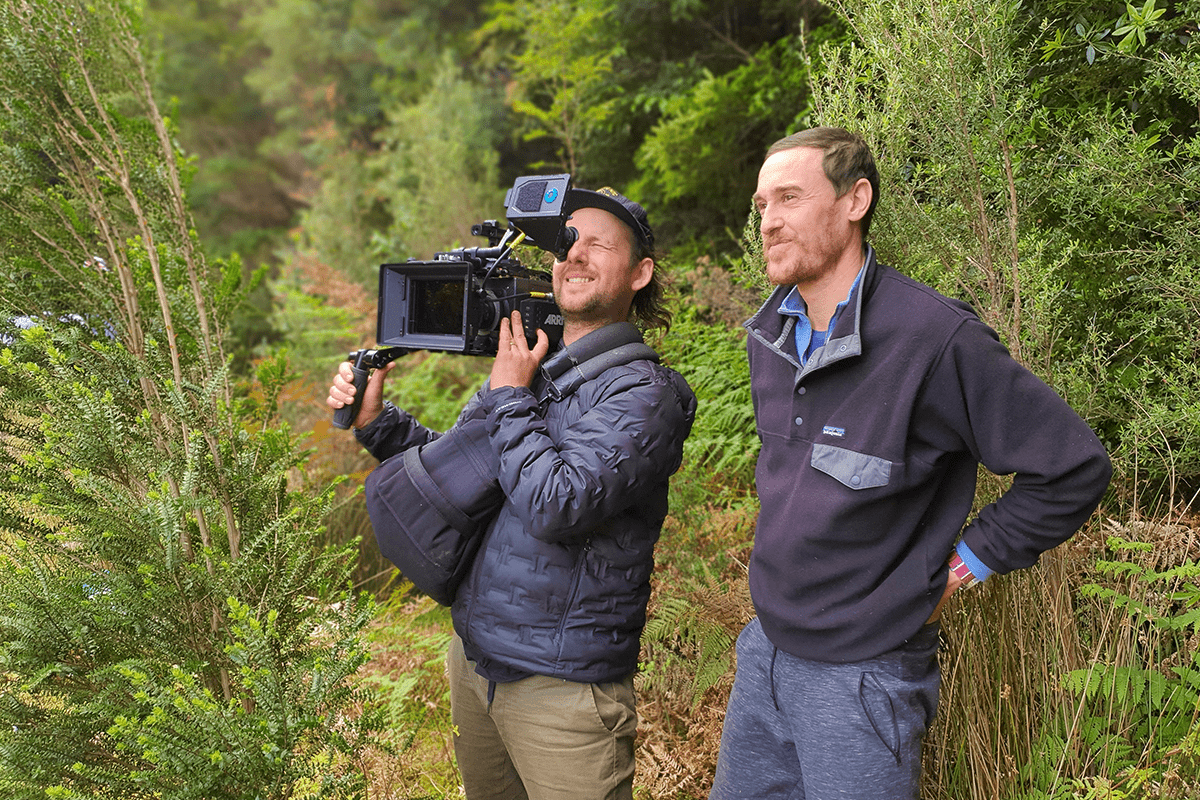 Benjamin Bryan (left) and Kasimir Burgess (right)
Benjamin Bryan (left) and Kasimir Burgess (right)
In this feature documentary, eighth-generation Tasmanian and environmentalist Oliver Cassidy sets out on a solo rafting trip down the remote Franklin River. It’s the same 14-day expedition his late father travelled in the early 1980s, to attend the blockade that helped save the World Heritage-listed national park from destruction by a hydroelectric dam project.
Benjamin Bryan: I knew going into the project that there would be a lot of the story told with archive footage, which was almost all shot on film. A lot of time was spent in pre-production, looking through it; beautiful footage shot by some really talented documentarians of that time. Kasimir Burgess, the director, wanted to establish a deep connection with the past as it was really central to Oliver’s journey, looking back on his father’s life and also the story of the protest, some 40 years prior but still so vivid in the minds of those who participated. There was also the grandeur of the river to consider, a truly wild and breathtaking landscape, a place that through its own sheer beauty had inspired a nation to defend it.
With those two things in mind, we decided on Contax Zeiss lenses, paired with an ARRI Mini LF as our main camera for the shoot and a 2.35 aspect ratio. The Contax lenses are vintage Zeiss glass and have a decent amount of character without totally falling apart wide open. They are still crazy sharp for older lenses too and so I used a black pro mist 1/8th filter to take the edge off. We spent a lot of the shoot on the 28mm as we wanted to feel close to Oliver and also be able to take in the landscape. Having the opportunity to use an ARRI Mini LF camera was a real blessing both for its filmic rendering of colour and also as it was really reliable operating in harsh conditions, not to mention the size for handheld. Edel Rafferty, our talented colourist, helped in the grade by adding a fair amount of grain to make the digital footage feel less disconnected to the archive.
We also shot a few sequences on Super 8mm film in order to depict Oliver imagining himself caught up in the protest as he nears the end of his journey. And finally, the epic aerial shots of the river were all filmed on the Mavic Pro 2 drone by intrepid landscape photographer Luke Tscharke.
Cinematographer: Kevin Scott
Director: Kriv Stenders
Filmed on 2 x Canon C300 MKIII Lenses with Rehoused Leica R Super Speeds. Elmarit R & Summicron R 19 24 28 35 50 80 135
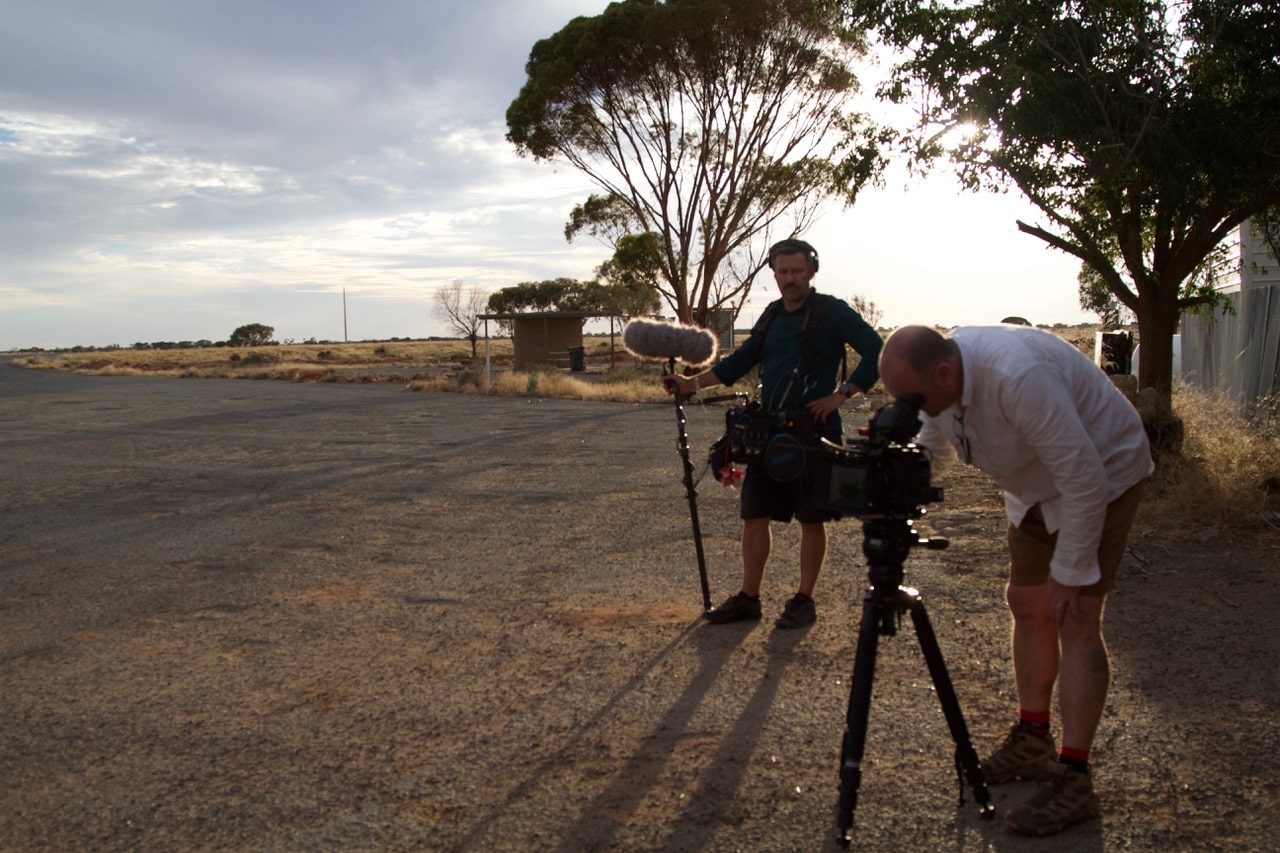 Kevin Scott filming on Going Country
Kevin Scott filming on Going Country
In Going Country, presenter Justine Clarke sets out on a road trip to connect with some of Australia's greatest musicians, including Paul Kelly, Kasey Chambers, Briggs and Troy Cassar-Daley, to discover the origins of our country music, and how it captures who we are as a people and a nation. Watch both episodes on ABC iview here.
Kevin Scott: From the very first meeting with director Kriv Stenders, we agreed that Going Country needed glass which gave us a lot of character. I love old, fast lenses: they have a certain nostalgia about them and amongst my favourites are the Leica Summicron R. We managed to get a set of Summicron R and Elmarit R all of which were consistent and all built in 1977 or 1978. There is a real sharpness to them, unlike other vintage lenses and ironically, they also have a softness to them which is really suited to portraits. I really love the skin tones they offer and they flare wonderfully, which was important for Going Country with us planning to shoot vast landscapes, all over Australia, both early in the morning and late in the evening. We mainly used wide angle lenses: our interviews would be a 24mm or 28mm for the wide and 35mm for a tight shot. The wide was generally a low angle and the tight was a 3/4 profile with some height to it. This also carried through to the rest of the job where the 28mm seemed to be the hero lens. Shooting in that style also accents the use of the 135mm when it did come out of the box. This job was always going to be a two-camera package, not only to give us multiple angles with interviews but also for shooting musical performances from the likes of Paul Kelly, Kasey Chambers & Troy Cassar-Daley, among others. Many of these performances were at sunset, so we needed as much coverage as possible in a very short space of time, and Kriv would jump on the 2nd camera to give us those extra options. We used a slider and gimbal to create movement and develop shots but because we were on the road and traveling as light as we could, small cameras were essential. I love the colour of the new Canon sensors and with the show being archived in 4K, the C300 MKIII’s were a perfect choice.
Cinematographer: Tania Lambert ACS
Directors: Fadia Abboud, Lucy Gaffy, Julie Kalceff, Ana Kokkinos and Leah Purcell
Filmed on an ARRI Mini LF with Tokina Cinema Vista Prime Lenses and Black Pearlescent filtration
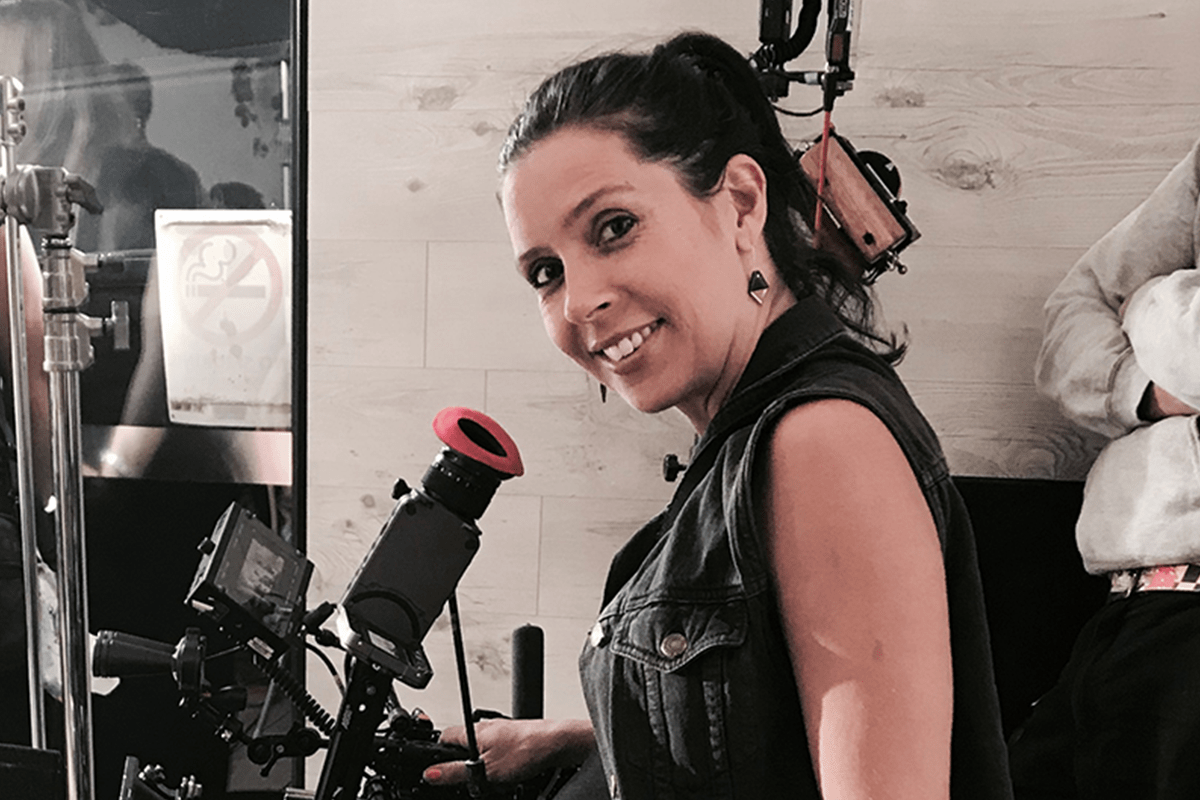 Tania Lambert ACS
Tania Lambert ACS
Australian anthology feature Here Out West features a creative team made up of eight writers, five directors, three producers and three executive producers. They weaved together eight stories (that included nine languages) into one cohesive feature, which made its World Premiere as Opening Night Film at Sydney Film Festival in 2021. Read more about Here Out West here and watch a Behind the Scenes interview with director Ana Kokkinos here.
Tania Lambert ACS: I shot Here Out West on ARRI Mini LF on Tokina Cinema Vista Primes with Black Pearlescent filtration. I had originally wanted to use anamorphic lenses for their bokeh and aspect ratio, but as we wanted to use predominantly handheld, with close ups pulling back to wider shots, I felt spherical would give us more flexibility. However, I used the inbuilt 2.40:1 format in camera to preserve my framing.
Cinematographer: Katie Milwright ACS, with water cinematographer Rick Rifici
Director: Ben Chessell, Sian Davies and Charlotte George
Filmed on Sony Venice camera with the Genesis G35 Vintage ‘66 lenses
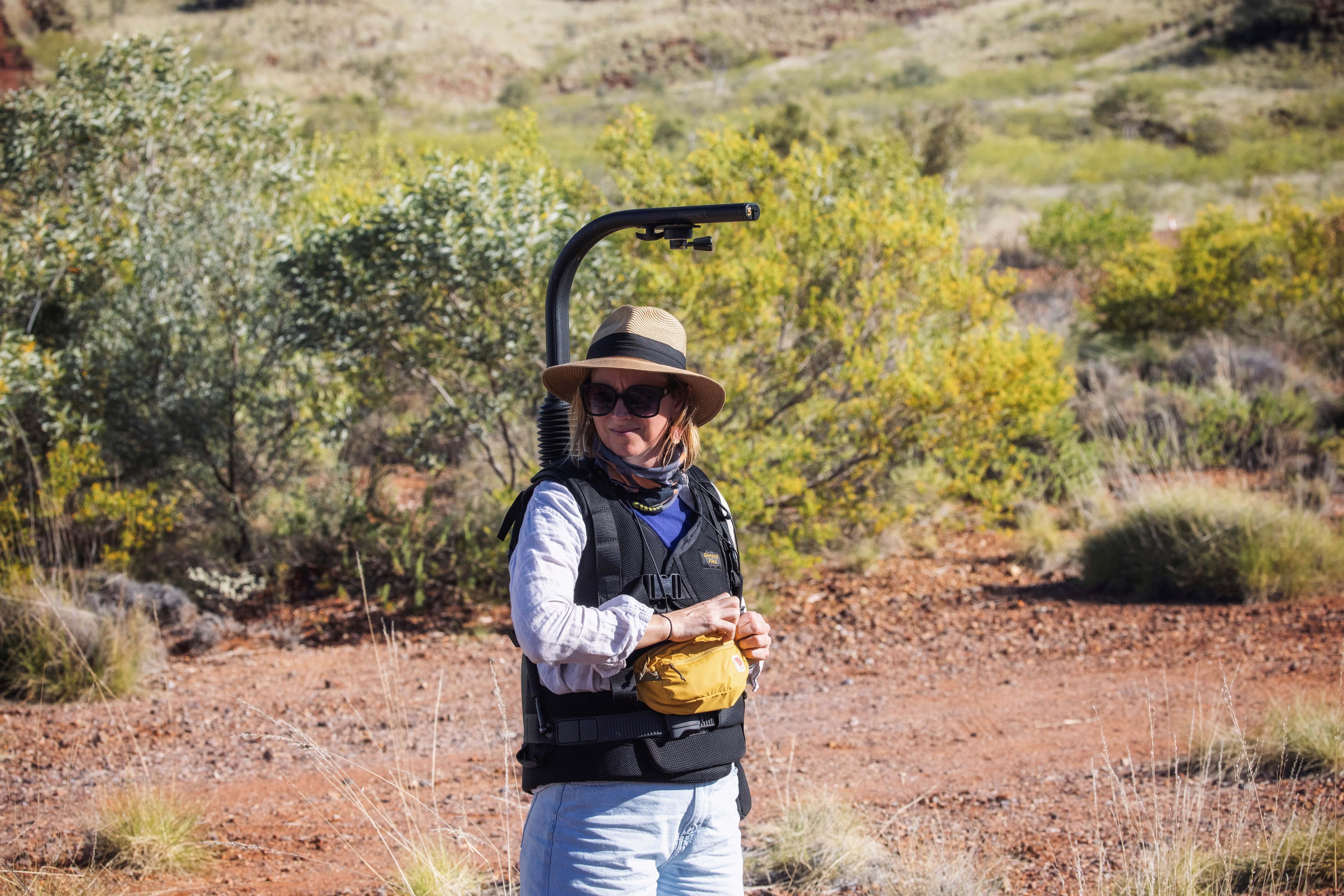 Katie Milwright ACS
Katie Milwright ACS
A teen drama series created by Joanna Werner and Josh Mapleston, it follows rebellious Summer Torres (Sky Katz) who’s sent to live with family friends in a tiny Victorian coastal town after being expelled from her Brooklyn highschool. It’s already been renewed for a second season and you can watch it on Netflix here.
Katie Milwright ACS: On Surviving Summer Season 1 we used the Sony Venice camera and the Genesis G35 Vintage ‘66 lenses. Ben Chessell the set-up director and I were looking for a sun-bleached, slightly nostalgic look for the show. I tested a bunch of cameras for the show and ran all my tests through the process with colourist Trish Cahill. I was really pleased with this camera/lens combination. I hadn’t used the Venice before and was intrigued by its dual ISO, giving us some better flexibility in low light. In Episode 4 we did a long scene on top of a roof at night, where we lit to look like moonlight, I used the 2500ISO setting and was really pleased with the fall-off of the light and the ability to create more depth for focus when I needed to. In fact, during prep, I was doubtful that I’d ever need to use the 2500ISO but found it so helpful at last light that I used it a lot more than I had originally thought.
The Vintage ‘66 lenses were also new for me and when I tested them, I found I loved their softness and the bokeh of the flare was really lovely. We wanted to be able to reach for the sun when we could and be happy that it’d do nice things in the lens. We were on the beach a lot, coming on and off Steadicam into handheld mode most of the time; I was pleased these lenses were lightweight and not too fiddly to work with. There are always time considerations on a TV schedule, where every minute counts – every minute longer you can hold the camera for and every minute for lens changes – which these lenses were great for.
Cinematographer: Mark Wareham ACS
Director: Leah Purcell
Filmed on ARRI Alexa Mini with Scorpio anamorphic lenses
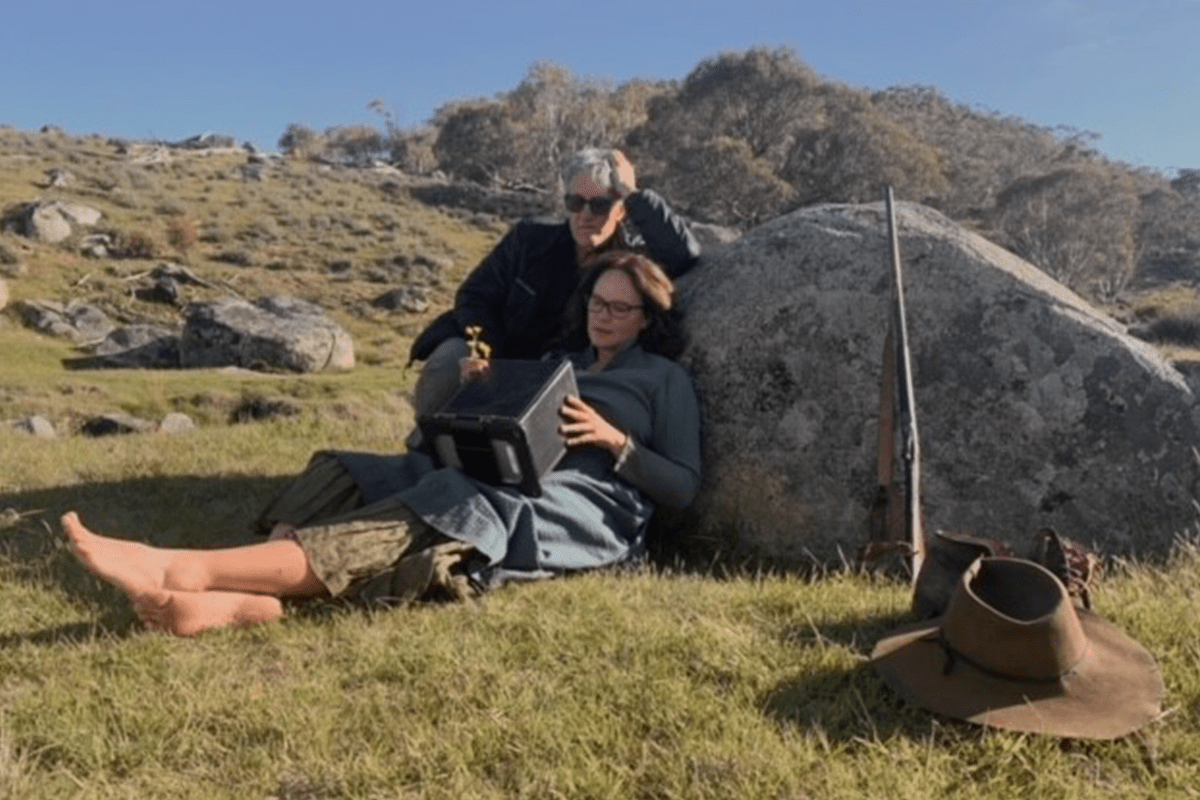 Mark Wareham ACS with director Leah Purcell
Mark Wareham ACS with director Leah Purcell
The feature directing debut of the film’s writer, producer and star Leah Purcell, The Drover’s Wife the Legend of Molly Johnson is a re-imagining of Henry Lawson’s 1892 short story “The Drover’s Wife”, which Purcell’s mother would read to her as a five year old. Hear more about the journey from short story, to stage, to novel, to screen here.
Mark Wareham ACS: The Drover’s Wife the Legend of Molly Johnson was shot [using an] ARRI Alexa Mini Shooting Anamorphic for wide screen in ARRI Raw. The lenses were Scorpio Anamorphic. After extensive testing of most camera and lens combinations in 2019 we chose this lens and camera package for reliability and close focus ability, also Leah preferred the look we achieved. I wanted to shoot on wider angle, mainly the 35mm with the lack of distortion and resolution for clarity of the landscapes, as Country played a big part in the story.
Cinematographer: Lucca Barone-Peters
Directors: Abby Gallaway, Hannah-Rae Meegan and Monique Terry
Filmed on ARRI Amira with a Fujinon Cabrio 19-90 zoom lens
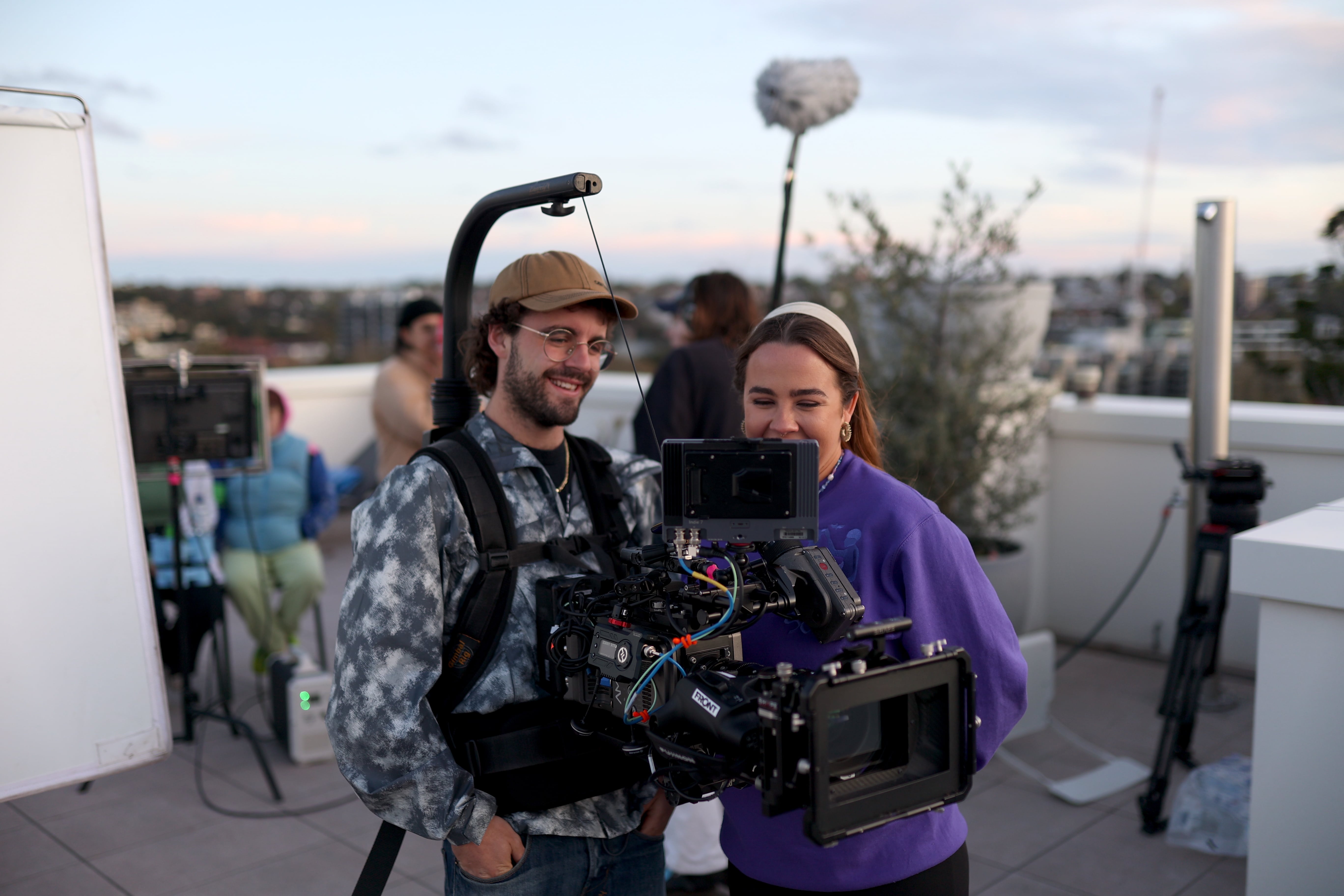 Lucca Barone-Peters and Monique Terry
Lucca Barone-Peters and Monique Terry
A schoolyard mockumentary series written, starring and co-directed by Hannah-Rae Meegan and Monique Terry, it follows two very different girls as they plan their Year 12 Formal – and in Season 4 and 5, which saw the switch from TikTok to YouTube, what happened after The Biggest Night of Their Lives. Watch seasons 1-3 on TikTok here and Seasons 4-5 on Mon&Han’s YouTube here, and check out an interview with the creators here.
Lucca Barone-Peters: The Formal has always had a very specific mockumentary style to it that was set from Season 1 - all handheld, with lots of small zooms in and out to follow action and emphasise comedic moments. This worked really well on TikTok and we wanted to keep the same style when we moved to YouTube for Season 4 and Season 5. The more traditional aspect ratio meant we didn’t need to turn the camera sideways anymore (which was a relief for my back), and suddenly we could fit two people in a frame side by side. We took advantage of this by actually shooting wide shots (very hard in a vertical frame) and letting scenes play out in a 2S (two-shot) as well as cross shooting singles. All these changes, as well as entirely new locations, meant that it was a risk that S4 and S5 wouldn’t look anything like the Formal Season 1-3. To keep continuity between the seasons we used the exact same camera package - an ARRI Amira with a Fujinon Cabrio 19-90 zoom lens. Stylistically we kept the same mockumentary look to the camera - all handheld movement tracking the action, with constant small zooms. As well as helping to make the show feel real, this style let us move really quickly between setups without having to change lenses or worry about much grip equipment. The Amira is a great camera for moving quickly while capturing beautiful images, and the Cabrio lens has such a great zoom range with a constant aperture of 2.9 that helped us to move quickly with our lighting.
I want to give a shoutout to my camera team Trudi Gultom (1st AC/Camera Operator) and Irisha Adnyana (2nd AC) who supported me so much through the shoot! The shoot wouldn’t have been possible without such a great team who were so on top of both the technical and creative elements and always brought good vibes.

What to read next
The creative team behind Elvis on creating a big budget studio movie in Australia.
17 Jun 2022
Caris Bizzaca